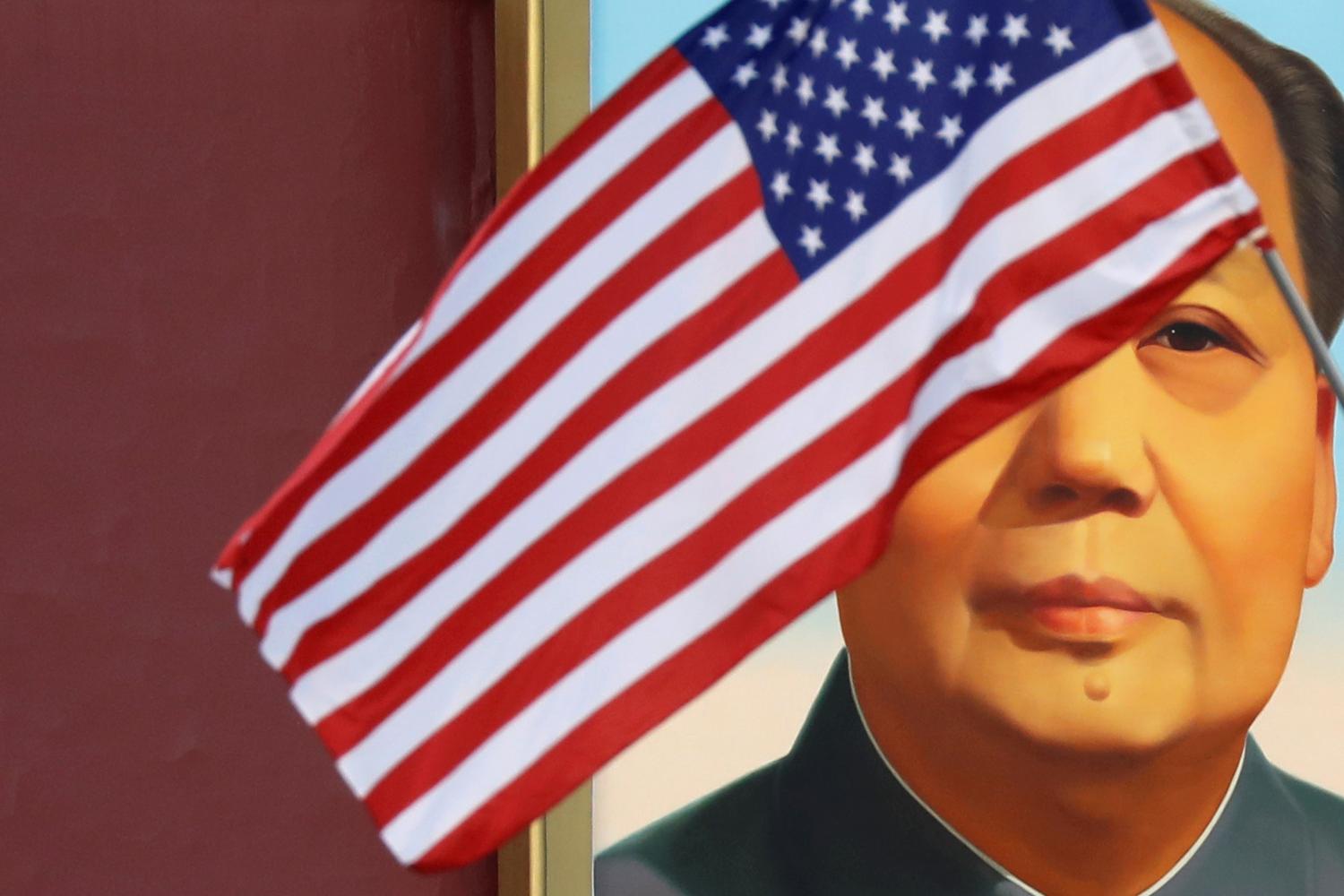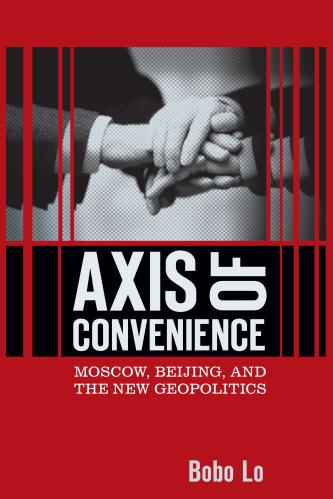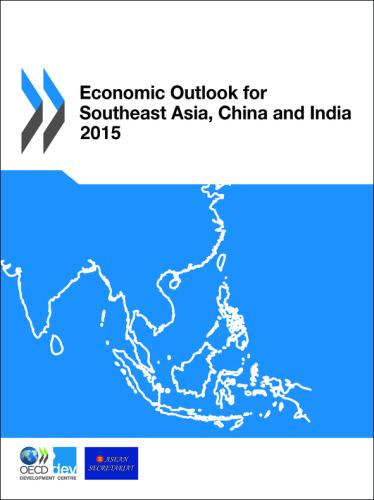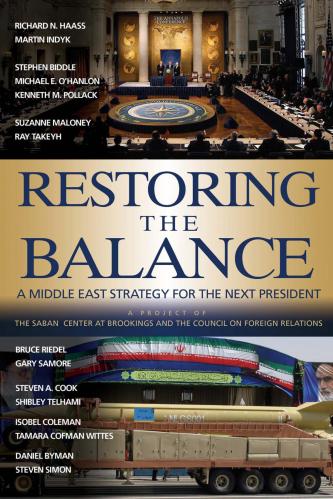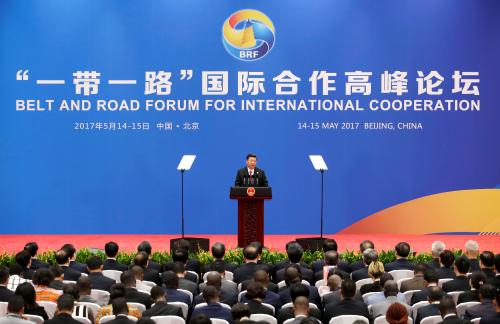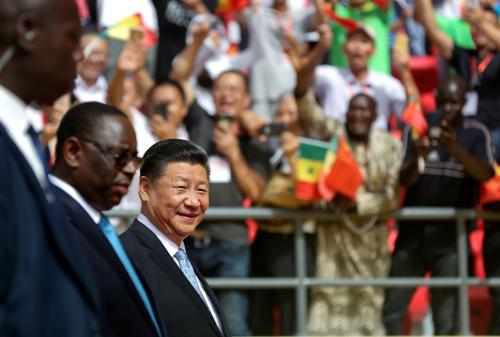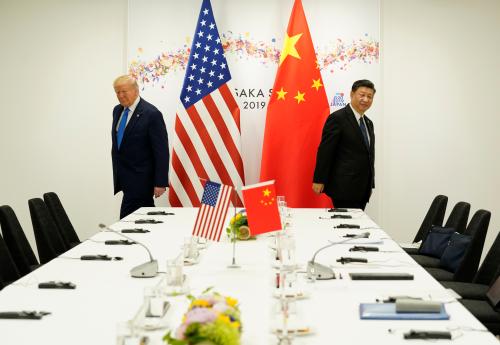The following is one of eight briefs commissioned for the 16th annual Brookings Blum Roundtable, “2020 and beyond: Maintaining the bipartisan narrative on US global development.”
The defining geopolitical feature of the first half of the 21st century, should current tensions between the United States and China continue escalating, will almost certainly be the strategic rivalry, or even a new cold war, between these two countries. A geopolitical clash will be costly to both countries. Such an outcome may even be catastrophic for China, where the combination of a hard-line Leninist regime, the revival of a cult of personality-driven leadership, and stalled economic reforms are on track to derail the country as it strives to become a high-income economy.
More broadly, this conflict will produce immense collateral damage worldwide. Besides dismantling the world’s highly efficient supply chain and possibly bifurcating technology standards, the zero-sum U.S.-China strategic rivalry could make it impossible for humanity to confront today’s climate emergency (largely because the policymakers in each country will see each other as their respective existential threat). Meanwhile, poverty reduction will slow considerably, because the fragmentation of the global economy will reduce global growth.
Unlike the Cold War, the unfolding U.S.-China strategic rivalry will not be a contest between dueling ideologies (even though ideological values more narrowly defined in terms of democracy and autocracy will stoke the dispute). As currently framed in Washington and Beijing, this is, at its heart, a contest for global preeminence or power. Also unlike the Cold War, the U.S.-China rivalry, geographically speaking, will unlikely encompass the entire world. Given the strategic priority it places on its own region, Asia will be the main theatre of China’s security and economic competition against the U.S.
At the moment, a sliver of hope remains that a completely zero-sum and costly cold war could be averted. This is because of two factors. First, the rapid deterioration in bilateral relations has been driven mainly by elites and the perception that the two countries are headed toward open-ended long-term conflict is, mercifully, largely confined to these elites. As neither country’s elites have built up durable popular support for a costly and open-ended conflict, the possibility of de-escalation, though small, still exists. Second, given the near certainty of unintended consequences and collateral damage, it is also likely that both countries will find the growing costs of open-ended confrontation outweigh the assumed geopolitical benefits. Under pressure from the international community and domestic interest groups, both countries may choose to de-escalate and find a higher ground on which to build mutual cooperation.
Nevertheless, current trends in bilateral relations offer few signs of de-escalation and, worse still, policies that have already been made, such as Washington’s decision to put Huawei on the “entity list” (a move intended to cripple the Chinese telecom giant), have irreversible consequences. This implies that the prospects of development cooperation between the U.S. and China are likely to be poor overall in the coming years, and will be especially dim in Southeast Asia, Central Asia, and South Asia. This is because it is in those subregions that each country will tie geopolitical objectives to their development assistance programs and view the other’s development programs with enormous suspicion.
Meanwhile, for the rest of the world, the prospects of development cooperation between the U.S. and China, while not great, are not totally bleak, either.
In all likelihood, prospects for cooperation depend heavily on: (1) the geopolitical sensitivity of specific issues, (2) the geopolitical importance of the countries concerned, (3) overlapping interests, and (4) the party that controls the U.S. executive branch.
1. Geopolitical sensitivity of specific issues
Development cooperation between the U.S. and China is more likely if the issues concerned are not geopolitically sensitive. The best example is health care and communicable disease. Collaboration in promoting health care and combating communicable disease entails practically no costs in lost security or geopolitical influence for either country. Another anodyne issue for U.S.-China development cooperation is environmental protection (such as clean drinking water), for similar reasons. However, if specific issues are seen to be of special geopolitical importance, then competition, not cooperation, will prevail. An obvious example is China’s Belt and Road Initiative (BRI). Even if BRI were to be redesigned and made more of a development assistance program than a geopolitical initiative, U.S. opposition is likely to endure, because Americans see BRI as a thinly disguised effort by China to expand its geopolitical footprint. The technology arena will be mostly competitive as well, because standards and security are involved. China’s promotion of its technologies, which may be technologically inferior but more cost-effective and competitive in developing countries, is expected to encounter vigorous U.S. pushback. This is because the adoption of Chinese standards will likely come at the cost of American technological dominance and potential loss of security.
2. The geopolitical importance of the countries concerned
Generally speaking, the U.S. and China will be more likely to cooperate in countries that are of marginal security or economic importance. Geographically, cooperation is more likely in countries located far from Asia and North America, since the central theater of their strategic rivalry is in Asia, especially in Southeast Asia. Even though China’s security interests in Latin America are secondary in nature, Chinese activities in the proverbial backyard of the U.S. will almost certainly be regarded as unfriendly and thus unwelcome by the U.S. In terms of security, countries located near key choke points, such as those astride major trade routes, will be arenas of U.S.-China competition rather than cooperation. Additionally, the U.S. and China are more likely to compete, instead of cooperating, in their respective development assistance in countries that possess strategic commodities, such as oil and natural gas (critical energy resources for China) or rare minerals (such as cobalt).
3. Overlapping interests
The U.S. and China are more likely to cooperate in development assistance in countries where they share common interests, such as security, stability, and investments. Take Afghanistan. Even though U.S.-China competition will be the rule rather than the exception in South Asia, Afghanistan is a country where the U.S. and China are likely to have overlapping interests. Both want to see a stable Afghanistan for different reasons. Washington is eager to end its long war there and leave behind a regime that can govern, while China needs stability in a country adjacent to its restive Xinjiang region. Cooperation is more likely than competition if the post-conflict regime in Afghanistan is seen as neutral by both countries. Another candidate for cooperation could be Somalia where stability can improve the safety of commercial shipping (although cooperation also hinges on the degree of neutrality of the government in the country in terms of U.S.-China strategic rivalry). The third set of candidates could be Sudan and South Sudan. For the U.S., the end of ethnic violence and protection of human rights in these two conflict-torn countries are important interests, while China needs to protect its enormous energy investments in both places.
The U.S. and China are also more likely to have overlapping interests in efforts to promote a lower-carbon economy and protect the oceans (albeit inconceivable under hard-right Republican administrations). This is mostly because playing a positive role in these non-security arenas will earn valuable international political capital while risking no loss in national security.
4. The party that controls the executive branch in the US
Republican administrations are less likely to cooperate with China in development assistance, global public goods, and climate change than Democratic ones, because they traditionally prioritize security interests over development assistance and, on the issue of a low-carbon economy and climate change, have been outright opposed to international collective action. Additionally, Republican policymakers are prone to see the world through zero-sum perspectives and thus are more likely to regard Chinese development activities as detrimental to American interests. Most importantly, since development assistance in the coming decades will be centered on climate change, a largely taboo subject for the Republican Party, cooperation with China on climate change would be unimaginable for a Republican administration. By contrast, Democratic administrations are more likely to cooperate with China where such cooperation will address issues they deem important, such as climate change and poverty reduction.
Conclusion
The above discussion suggests that potential areas of development cooperation between the U.S. and China do exist, though they are likely to be limited. Besides the four constraining factors identified above, we should be aware that their strategic rivalry will also severely restrict the forms and extent of their cooperation. In all likelihood, cooperation will be confined to information sharing, avoidance of duplication of efforts, and restraint from obstructive actions.
What is difficult to know at this stage is whether the net result of U.S.-China strategic competition will be beneficial or detrimental to the cause of development. There are arguments on both sides. On the one hand, the rivalry may incentivize both sides to devote more resources to development assistance, especially in areas or on issues deemed strategically important. On the other hand, the injection of geopolitical strategic objectives into development activities will likely result in projects of dubious development value, because the selection criteria will be geopolitical, rather than economic and social. Additionally, U.S.-China strategic rivalry will likely reduce the degree of transparency (because both sides want to shield their intentions and plans in secrecy) and benefit the ruling elites in targeted countries (who will be wooed with promises of considerable private benefits).
Whatever transpires in the development assistance policies in Washington and Beijing, developing countries, like the rest of the world, will be caught between two economic giants locked in hostile coexistence and uncompromising geopolitical rivalry. This is doubtlessly the greatest geopolitical tragedy of the 21st century. Yet that’s where the world seems to be headed.

